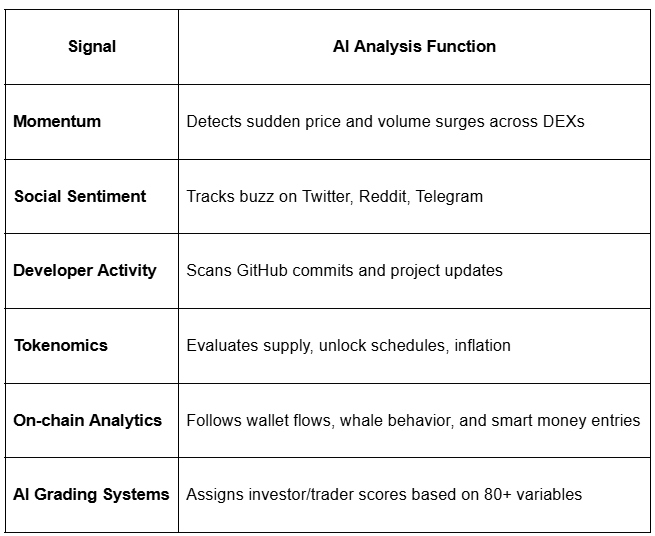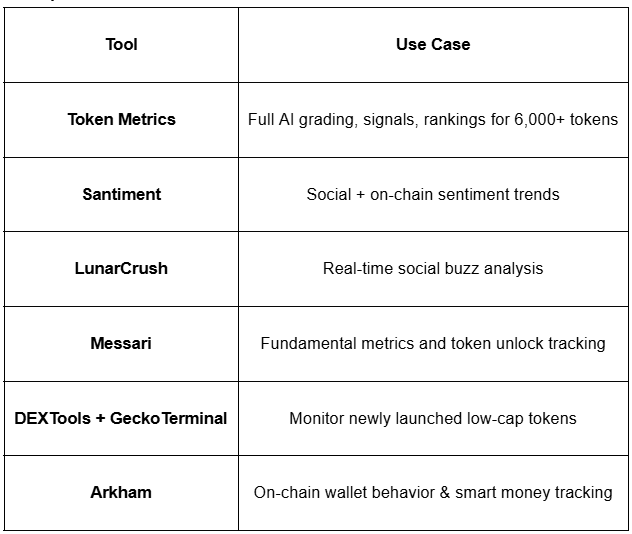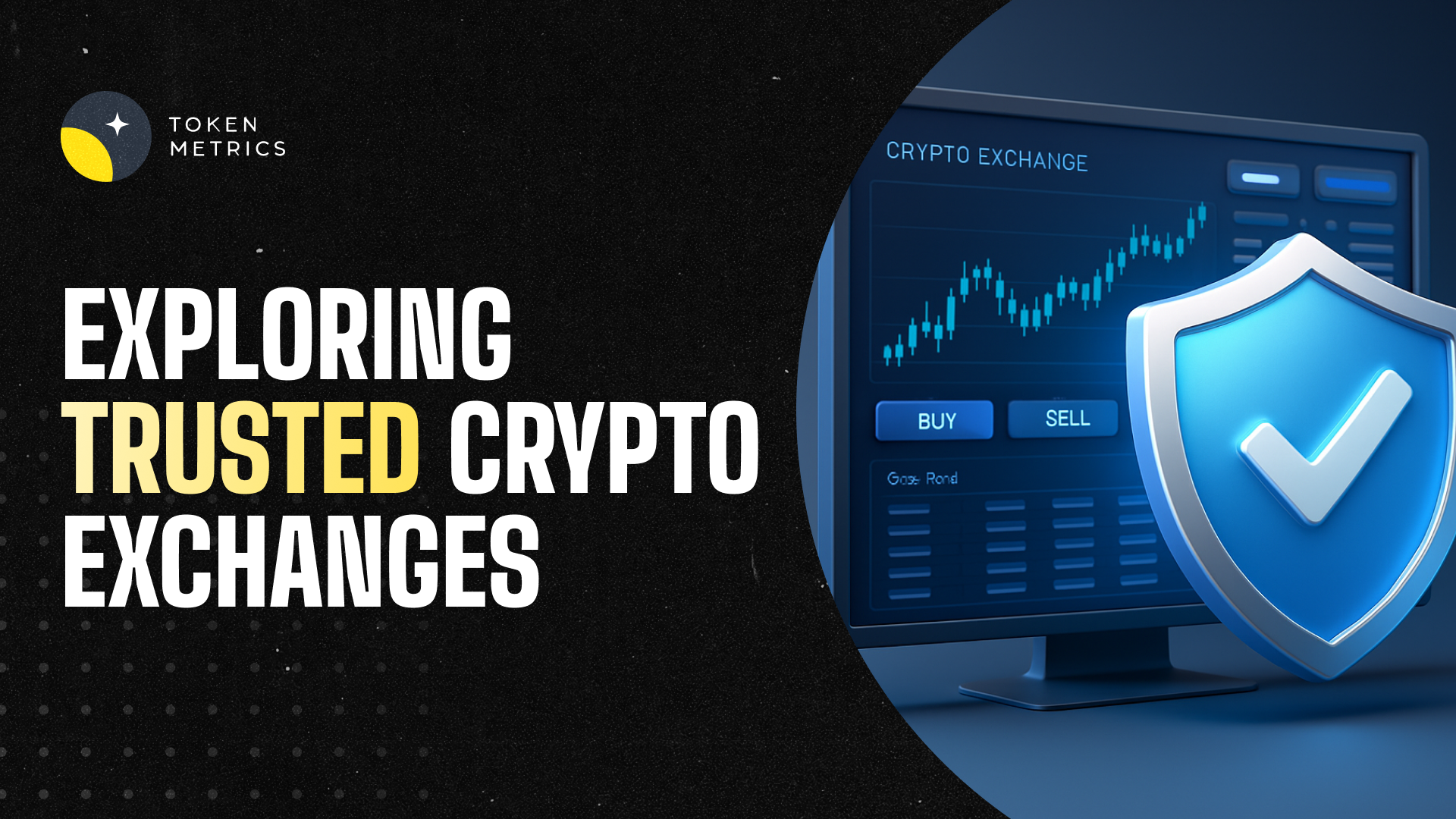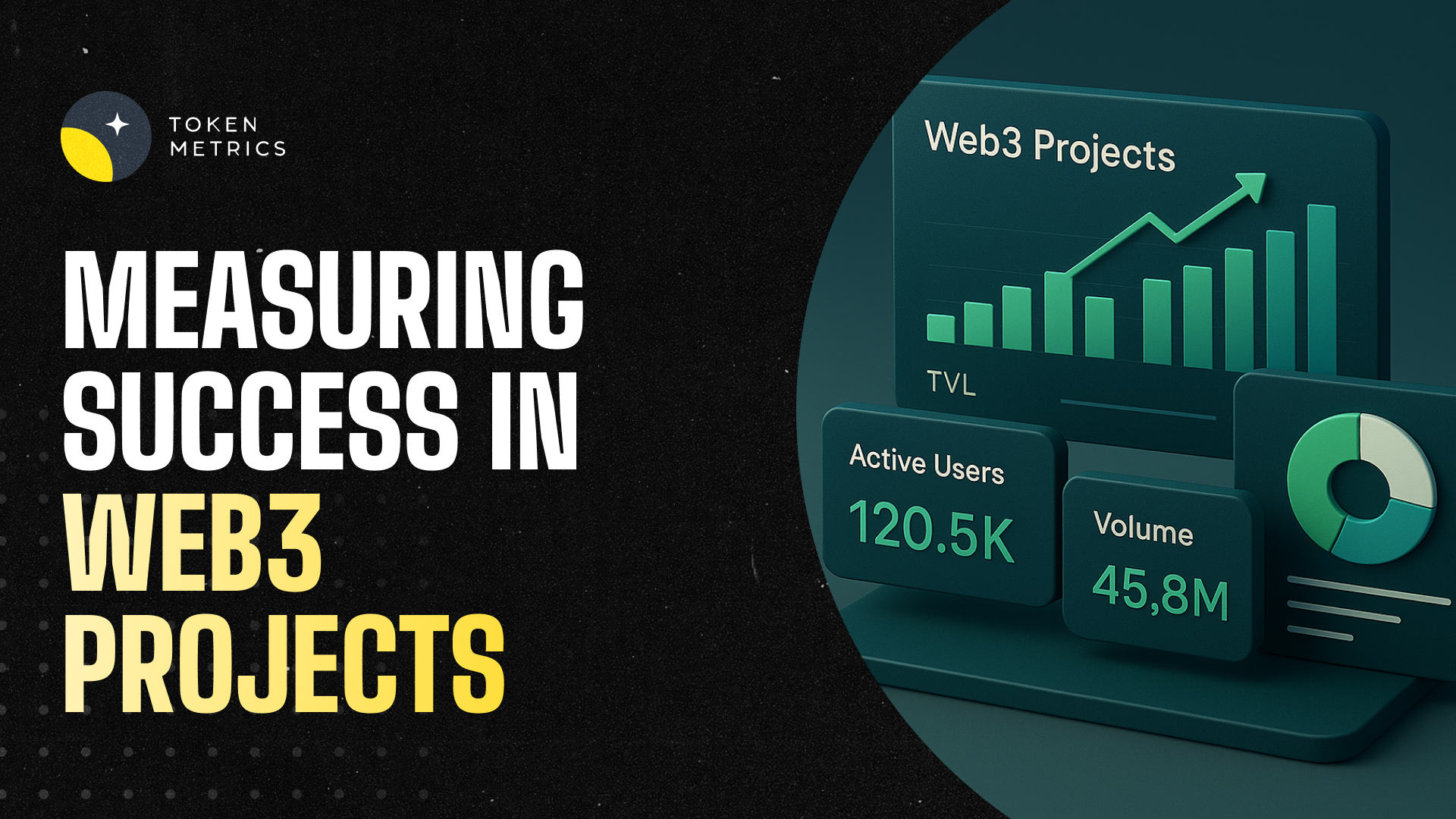Can AI or Data Tools Help Identify Moonshots?

From Hype to Science — The Role of AI in Finding Moonshots
In the past, finding a 100x moonshot often meant trolling crypto Twitter threads, scanning Discord servers, or jumping into Telegram groups filled with bots and hype. But times have changed. In 2025, the smartest investors use AI and data analytics tools to uncover hidden gems before they explode.
This blog explores how AI and crypto-specific data platforms like Token Metrics are transforming moonshot discovery into a science — removing the guesswork and helping investors spot massive opportunities early.
Why Human-Only Research Isn’t Enough Anymore
With over 2 million crypto tokens and hundreds launching weekly, it’s virtually impossible to manually research everything. Retail traders are often overwhelmed, relying on gut feelings or influencer tweets.
AI levels the playing field by:
- Analyzing massive datasets at scale
- Spotting hidden patterns in price, volume, and sentiment
- Scoring tokens based on fundamentals, momentum, and risk
- Filtering out noise, scams, and pump-and-dumps
Simply put, AI sees what the human eye misses.
How AI Tools Detect Moonshots
AI models trained on crypto data can identify early-stage projects by analyzing:

These insights allow you to rank tokens and prioritize research efforts.
How Token Metrics AI Grades Work
Token Metrics, a pioneer in AI-driven crypto analytics, uses machine learning to generate Investor Grades, Trader Grades, and Bullish/Bearish Signals for thousands of tokens.
Here's how:
- Investor Grade – Long-term potential based on fundamentals, community, tech
- Trader Grade – Short-term potential based on price action, momentum, liquidity
- Bullish Signal – Triggered when AI detects high-probability upside within 7–14 days
- Bearish Signal – Warns of likely downturns or profit-taking zones
Moonshots that rank highly across these metrics are often early movers with breakout potential.

Top Tools to Find Moonshots with AI & Data

Use these tools together to spot patterns others miss.
Case Study: AI Spotting a Moonshot Early
Let’s say a low-cap AI token called NeuroLink AI launches. It’s not yet on CEXs but shows:
- Spike in GitHub commits
- Surge in Telegram growth
- 24h price up 18%, volume 400%
- Mentioned in 3 Token Metrics Bullish Signals in one week
- AI Trader Grade: 91/100
That’s a prime moonshot candidate worth further analysis — and most retail traders wouldn’t catch it until it’s up 5x.
Human + AI = The Winning Formula
AI doesn't replace human judgment — it enhances it. The best approach is:
- Use AI to scan, sort, and filter top candidates
- Manually research the top 5–10 picks
- Evaluate community, product, team, and roadmap
- Use risk metrics and technicals for entry/exit planning
This hybrid approach minimizes FOMO and maximizes precision.
Moonshot AI Checklist
Before diving in, check:
✅ High AI Trader or Investor Grade (85+)
✅ Momentum score surging
✅ Early-stage narrative (AI, DePIN, RWA, etc.)
✅ Community growth across socials
✅ Smart money inflows on-chain
✅ No major unlocks in next 30 days
If all boxes are ticked, you may have found your next 10x.
Final Thoughts: AI is the Ultimate Edge in 2025
Crypto moonshots are no longer found in meme threads and TikTok videos alone. In 2025, the best investors use AI-powered research to systematically uncover explosive opportunities before they go viral.
By leveraging platforms like Token Metrics, you turn chaos into clarity — and emotion into execution.
Create Your Free Token Metrics Account

.png)




%201.svg)
%201.svg)


%201.svg)










.svg)




.png)